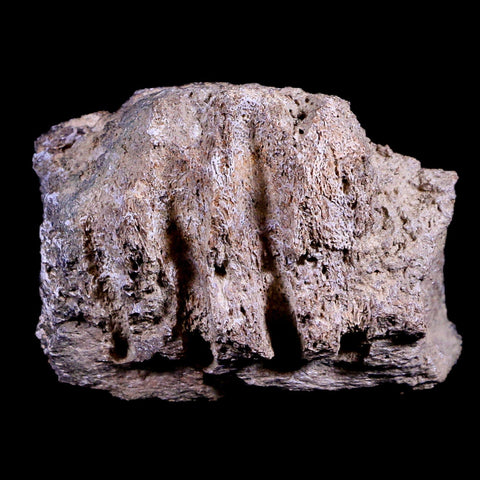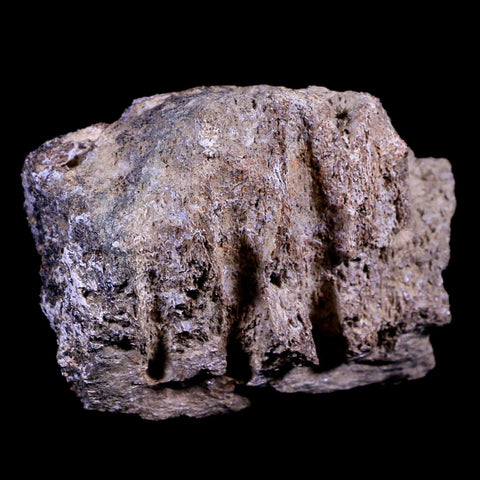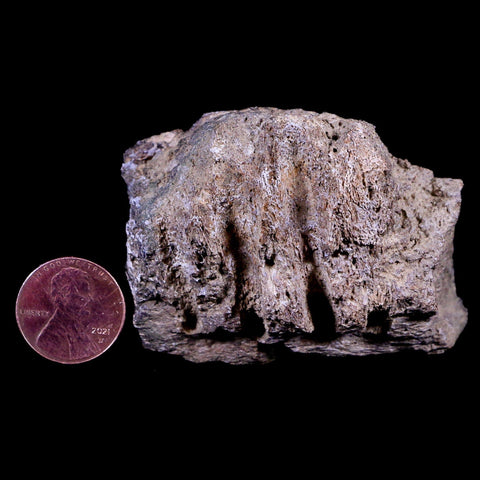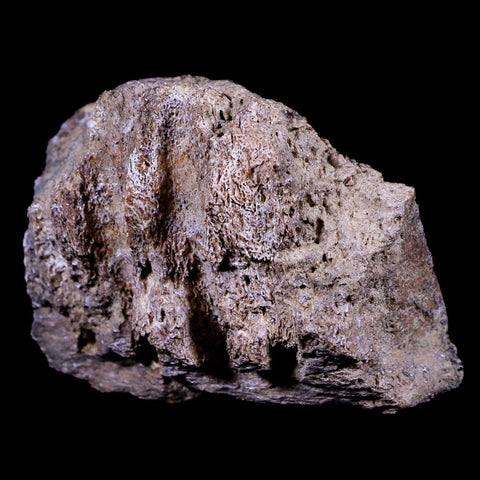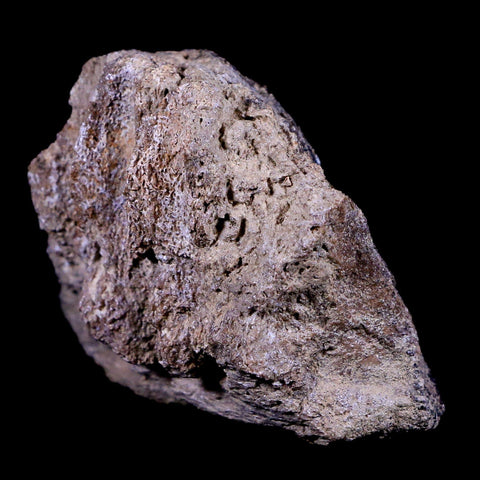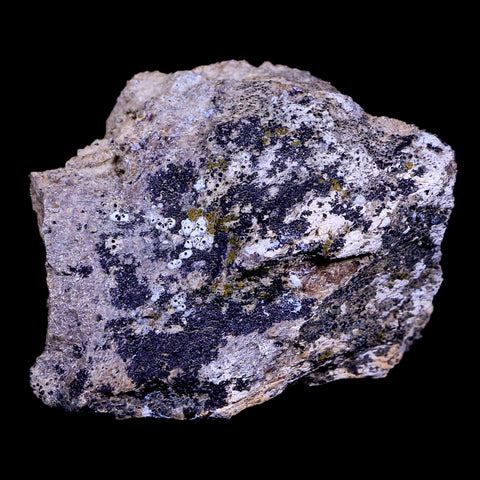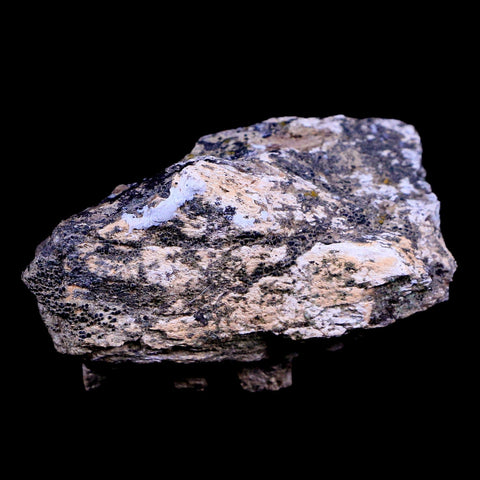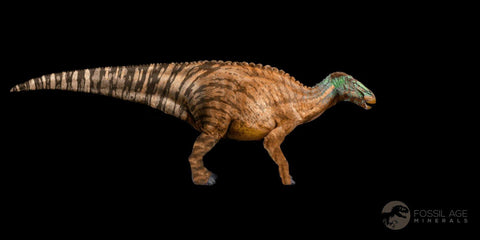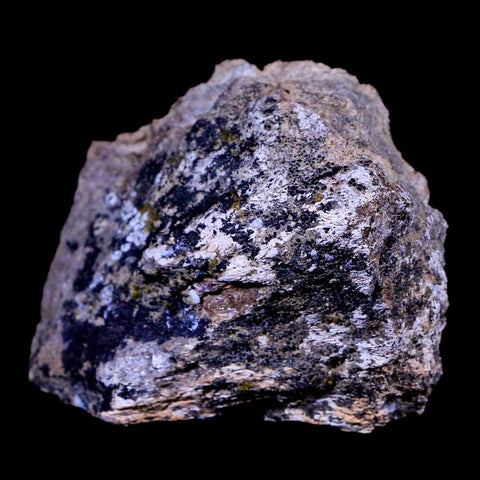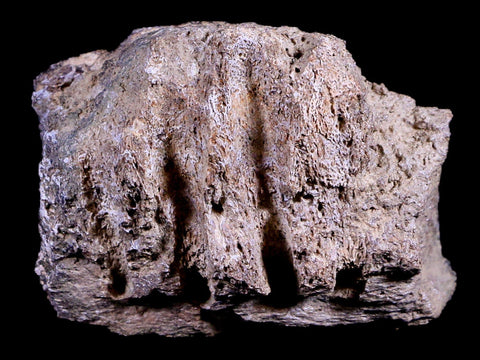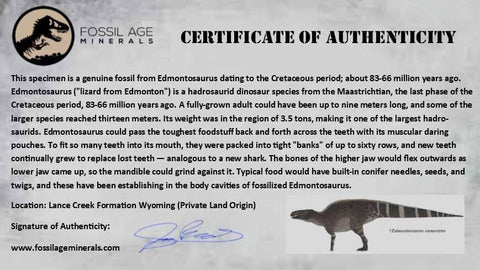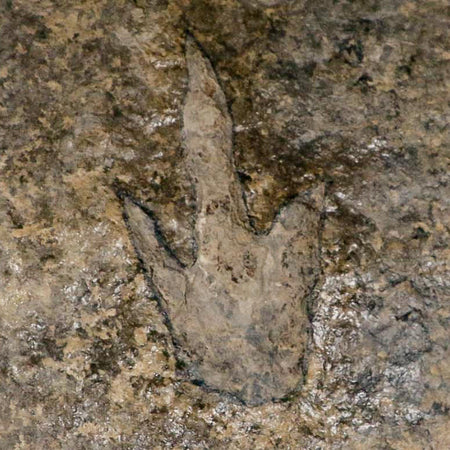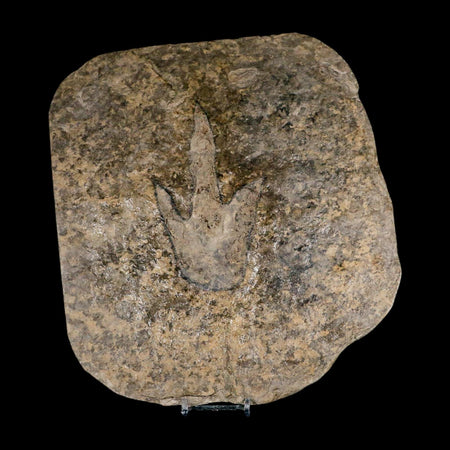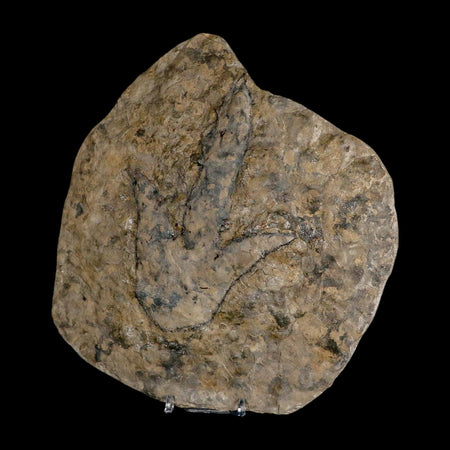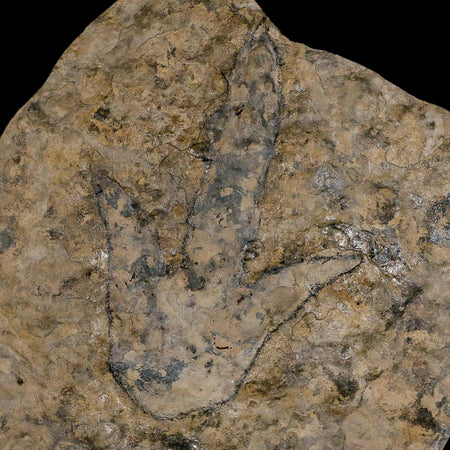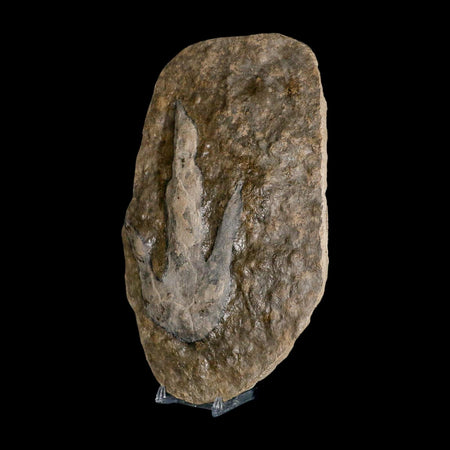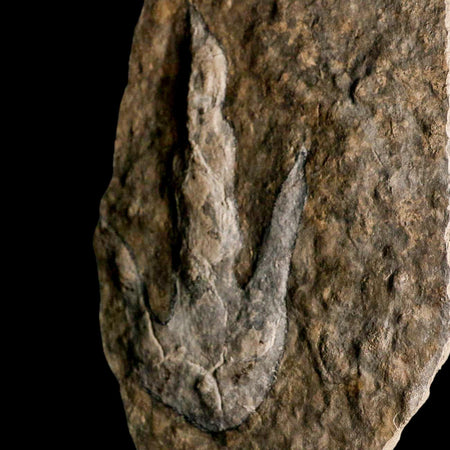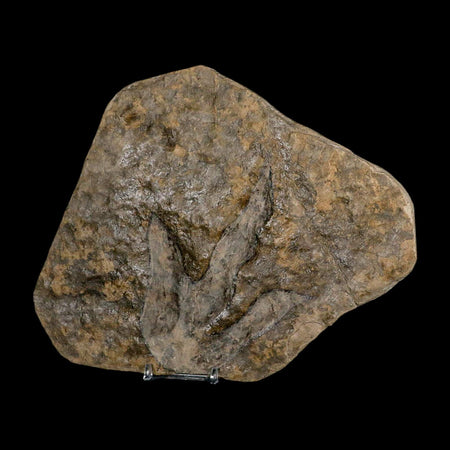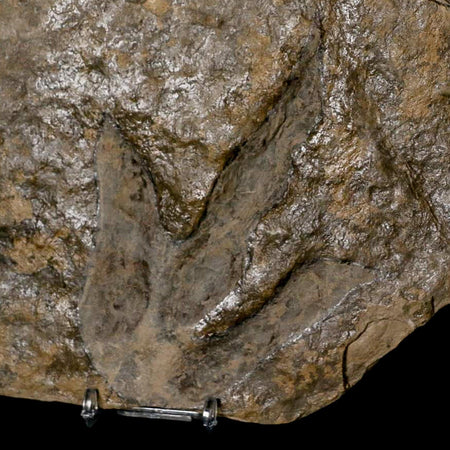2.3" Edmontosaurus Fossil Jaw Maxilla Bone Lance Creek Cretaceous Dinosaur WY COA
Location: Lance Creek Formation, Wyoming (Private Land Origin)
Weight: 4 Ounces
Dimensions: 2.3 Inches Long, 2 Inches Wide, 1.4 Inches Thick
Comes with a Certificate of Authenticity.
The item pictured is the one you will receive.
This is a genuine fossil.
Edmontosaurus ("lizard from Edmonton") is a hadrosaurid dinosaur species from the Maastrichtian, the last phase of the Cretaceous period, 71-65 million years ago. A fully-grown adult could have been up to nine meters long, and some of the larger species reached thirteen meters. Its weight was in the region of 3.5 tonnes, making it one of the largest hadrosaurids.
Edmontosaurus could pass the toughest foodstuffs back and forth across the teeth with its muscular, daring pouches.
To accommodate numerous teeth, they were arranged in compact "banks" of up to sixty rows, with new teeth constantly growing to replace those lost—much like sharks. The upper jaw bones flexed outward as the lower jaw rose, allowing the mandible to grind against them. Fossils reveal that its diet commonly included conifer needles, seeds, and twigs found in its body cavities, indicating that it primarily browsed on trees.
The 1908 discovery in Wyoming was particularly remarkable in that paleontologists actually recovered fossilized imprints of Edmontosaurus' skin. The skin drying very quickly and fixing its shape into the mud must have left an impression. It is from these limitations that we know the skin was scaly and leathery, and the thigh muscle was under the skin of the body. This would have given the feeling that the leg left its body at the knee, and the whole thigh was under the skin. This only contributes to its resemblance to a duck. It also had many tubercles (bumps) on its neck and down its back and tail.
Edmontosaurus primarily moved on two legs but was also capable of walking on all fours. Its forelimbs were shorter than the hindlimbs, yet still sufficiently developed to support quadrupedal locomotion. The front feet had hooves on two digits and weight-bearing pads similar to those of Camarasaurus, while the rear feet consisted of two hooked toes. The bone structure of the lower limbs indicates strong muscle attachments in both legs and feet. With a spine that angled downward at the shoulders, Edmontosaurus maintained a low stance, allowing it to browse close to the ground. Despite its strong limbs, it likely moved slowly and lacked significant defensive adaptations, relying on sharp eyesight, acute hearing, and a keen sense of smell to detect predators early.



